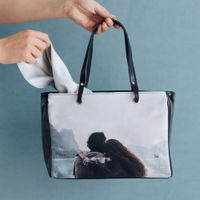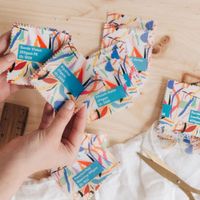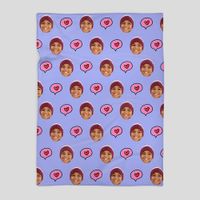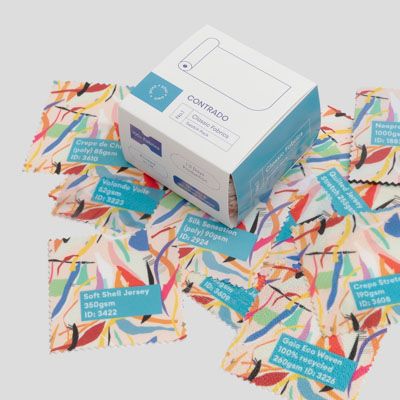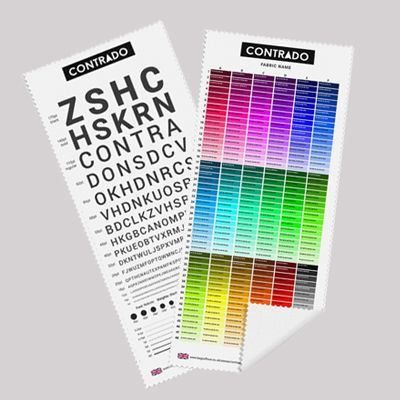![DPI-Print Guideline Icon]()
What resolution is best for printing?
All of our fabrics are printed at 200dpi. This works for us as it combines a great quality as we as a good file weight. In order to avoid resizing and interpolation, we recommend that you scale your image to 100% at 200dpi. Our design interface works with a traffic light system that acts as a quality marker for your designs. This will show you whether the resolution is too low for printing. When you re-upload your design with a highest resolution, the traffic lights will change colour, showing you're good to go. A message will pop up alongside the traffic lights to let you know if the resolution is too low or if you have a good quality image.
![scaling-Print Guideline Icon]()
Will my image be scaled to fit?
Your uploaded design will automatically be scaled to fit the size of fabric you've chosen. You can change the dimensions of your fabric by amending the measurements on the ‘Product Options’ tab, under ‘Print Size’. To see how this fits with the dimensions of your image/design, you can refer to the ‘Images & Text Tools’ tab under 'Quality Information'. Here, you will be able to edit the dimensions of the image.
![RGB-CMYK Print Guideline Icon]()
Should I choose RGB or CMYK?
We always recommend using an RGB colour space when you upload your images. More specifically, we suggest using the sRGB image profile, to achieve best colour results. This will need to be done in your editing software; choose RGB as the working space, and assign the image profile as sRGB (full name sRGB IEC61966-2.1)
![Print-Roll Length Fabric Guide Icon]()
Is there a maximum length I can print on?
There is no length limit for most of our fabrics. Our preview design window is set up to displaying a maximum of 10m to help you visualise the print, but that doesn't mean this is the print limit. If you'd like to order more, you can increase the quantity (x2 for 20m or x4 for 40m for example) and order as much as you'd like. Larger volumes will receive an automatic discount too. While the fabric length is nothing to worry about, each individual fabric will have a maximum width side: These can be found on the fabric's page information or in the design interface.
![Borders-Print Guideline Icon]()
Should I add white space for borders or cutting onto my design?
Yes, that will help you when it comes to cutting or framing your printed fabric. We recommend always adding a little extra space for borders into your purchased fabric size. When we print your materials, or send out fabric samples, we typically trim squarely around the fabric, leaving approximately 5mm white space. Cutting neatly on the line has an additional fee.
![crocking-Print Guideline Icon]()
What is crocking?
Crocking is the term used to describe fading along the creases in a fabric. It typically can occur after constant washing or heavy use of digitally printed natural fabrics. Crocking can be minimised by hand washing your fabrics at a cooler temperature, rather than machine washing. If you want to make sure there's no chance of crocking, we'd suggest you use a poly fabric.
![organics-Print Guideline Icon]()
Is it normal for colours to appear lighter on organic fabrics?
Yes, our organic fabrics don't have an additional coating like non-organic fabrics have, which means it absorbs the inks deep into its fibre and reducing the colour strength slightly (this can be approximately -40%). If you would like a bolder, more vibrant colour for your fabric, we would suggest using a non-organic fabric.
![Transfer-Print Guideline Icon]()
Can I supply my own fabric for you to print onto?
Unfortunately not; all of our fabrics have been tested meticulously to ensure we know exactly how to get the best results, and our facilities cater perfectly to them. If you are set on a fabric we don't offer, we can offer custom printed sublimation paper to order which will allow you to heat press your designs onto your own fabrics.
![Jpeg-Tiff Print Guideline Icon]()
Which is a better image format: TIFF or JPEG?
If your design is simple and less intricate, a JPEG will be absolutely fine. However, if you have created a design with multi-coloured detailing, we would recommend saving your design in a TIFF format.
![Shrinkage-Print Guideline Icon]()
Will my material shrink during printing?
Similar to other fabric printing processes, shrinkage can occur. The amount of shrinkage will depend on the fabric, but as a general rule of thumb, please allow for 2-8% shrinkage when working out your measurements. Shrinkage is not an exact science, and the amount of shrinkage will vary from print run to print run. We'd always suggest order a little more than you need for your project.
![Print-Both Sides Print Guideline Icon]()
Can I order double sided printed fabric?
Many of the fabrics we offer are semi-transparent, so printing on both sides of the fabric is not a service we offer.
![Labels-Print Guideline Icon]()
Can I order labels in a different fabric? Are the labels cut like normal fabric labels?
At the moment, all of our fabric labels are printed on satin fabric. For now, we believe this is the best choice, but will potentially introduce other options in the future. All labels are cut to the same label format. If you would like to choose a different fabric and format for your labels, you could always order a sheet of the fabric of your choice to create labels yourself.
![Eco friendly Printing]()
How do you print your fabrics in an eco-friendly way?
Our fabrics are printed with water-based inks as environmental consciousness is always front of our minds. Water-based inks include no chemicals or solvents, and our printing process uses heat to fix colours and patterns into place to avoid excess or contaminated water returning into the water system (this is something that can occur through steaming). All printing, fulfilment and production is done in our one facility in London, and rather than rolling the fabrics or sending them in a tube, you will receive your material folded up. This amounts to 150 tubes saved a week, as well as much more space on the delivery van for more orders. (For delicate fabrics we ensure to package appropriately).
![colour palette]()
Will there be slight colour differences between my orders?
Although very rare, there could be a slight colour difference from one print run to another. This is a normal part of the printing process, however we are always working to improve our colour profiles. It is unlikely that the difference in print runs will be hugely different (for example, it's unlikely your orange is suddenly going to be red). The likelihood of colour variations can be intensified fabric to fabric due to materials having different grains and textures; natural fabrics typically have more muted colour tones, while poly alternatives have a bolder hue. This is because the construction of the material is different, and the printing method has to be altered slightly for more delicate, natural textiles.
 Made in the UK
Made in the UK



